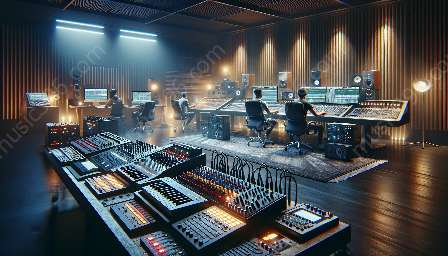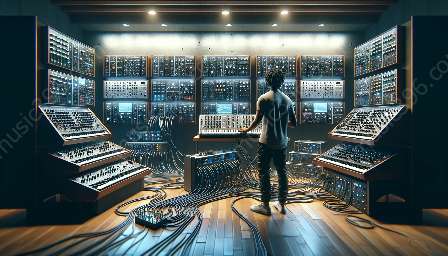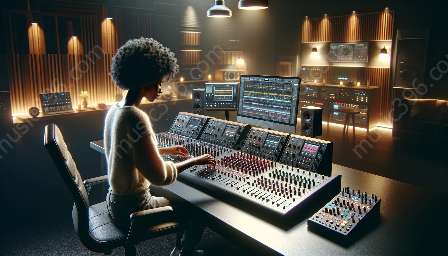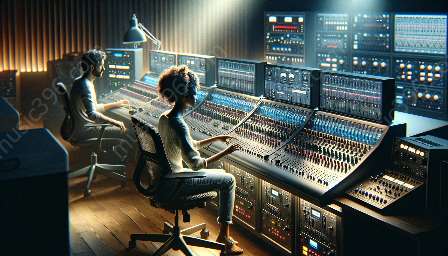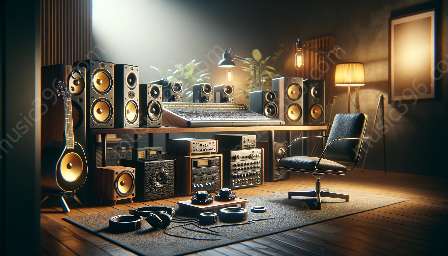When it comes to mixing music, analog emulation plugins play a pivotal role in advanced mixing techniques and music technology. These virtual tools allow mix engineers to recreate the classic sound of analog gear within a digital environment, providing a versatile and powerful approach to shaping the sonic landscape of a mix.
The Rise of Analog Emulation Plugins
In the early days of music production, analog hardware such as vintage compressors, equalizers, and tape machines were the cornerstone of the mixing process. The warmth, color, and character they imparted to audio signals became sought-after elements in the music industry. However, as digital recording technology emerged, mix engineers and producers faced the challenge of replicating the sonic characteristics of analog equipment within the convenience of a digital audio workstation (DAW).
As a response to this demand, analog emulation plugins were developed. These software-based tools are designed to faithfully replicate the sonic qualities and behavior of classic analog gear, providing musicians and producers with access to a wide range of vintage and modern hardware emulations for the purpose of mixing and shaping audio.
Role of Analog Emulation Plugins in Advanced Mixing Techniques
1. Authentic Sound Replication: Analog emulation plugins are capable of delivering strikingly accurate representations of vintage analog gear, allowing mix engineers to harness the distinctive sonic characteristics of classic hardware. By incorporating these plugins into their workflow, engineers can achieve a vintage, organic sound that adds depth and richness to their mixes.
2. Sonic Flexibility and Creativity: With analog emulation plugins, mix engineers can experiment with various emulated hardware units, altering parameters and dialing in specific sonic traits to suit their artistic vision. This flexibility enables engineers to explore creative sound design possibilities and craft unique textures, tones, and atmospheres in their mixes.
3. Subtle Distortion and Saturation: Analog emulation plugins are adept at introducing harmonically rich distortion, saturation, and coloration to audio signals, mimicking the unique tonal characteristics of analog hardware. These subtle sonic enhancements can contribute to a mix's depth, energy, and overall musicality, fostering a sense of warmth and authenticity.
4. Precise Control and Recallability: Unlike their hardware counterparts, analog emulation plugins offer precise control over parameters, allowing engineers to fine-tune the sonic characteristics of their mix with ease. Furthermore, the ability to recall plugin settings within a DAW session facilitates efficient workflow management and promotes consistent sonic outcomes across multiple projects.
Analog Emulation Plugins in the Context of Music Technology
The integration of analog emulation plugins into music technology has revolutionized the modern approach to mixing and production. These plugins have become indispensable tools for achieving sonic excellence in both professional and home studio environments. Their compatibility with advanced mixing techniques and music technology is evident in the following aspects:
1. Seamless Integration with DAWs: Analog emulation plugins are designed to seamlessly integrate with popular DAWs, enabling mix engineers to incorporate vintage analog emulation within their digital mixing environment. This integration fosters a cohesive workflow and facilitates the efficient application of advanced mixing techniques.
2. Real-time Processing and Automation: With the advancement of music technology, analog emulation plugins offer real-time processing capabilities and extensive automation features. Mix engineers can dynamically adjust plugin parameters in real time, automate changes across the mix, and experiment with expressive modulations for a nuanced and polished sound.
3. Expanded Access to Classic Gear: Analog emulation plugins provide accessibility to a vast collection of coveted analog hardware units that may be cost-prohibitive or physically impractical for many musicians and producers. This democratization of classic gear empowers creators with the tools to sculpt their sonic identity and explore the sonic palette of revered vintage equipment.
4. Preservation of Audio Heritage: In the realm of music technology, analog emulation plugins contribute to the preservation of audio heritage by faithfully emulating iconic hardware that has shaped the history of music production. Through meticulous modeling and sound engineering, these plugins uphold the legacy of legendary analog gear, allowing contemporary creators to inherit and build upon the sonic traditions of the past.
Conclusion
As the landscape of mixing and music technology continues to evolve, analog emulation plugins remain instrumental in shaping the sonic identities of modern music productions. Their role in advanced mixing techniques and music technology encompasses the seamless integration of vintage analog sound within a digital environment, enabling engineers to channel the warmth, character, and sonic nuances of analog gear. By embracing these virtual tools, mix engineers can unlock a realm of sonic possibilities, infuse their mixes with unparalleled richness, and perpetuate the enduring legacy of classic analog equipment in the digital age.


